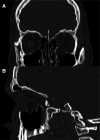International Olympic Committee (IOC) consensus paper on sports-related ophthalmology issues in elite sports
- PMID: 37485004
- PMCID: PMC10357794
- DOI: 10.1136/bmjsem-2023-001644
International Olympic Committee (IOC) consensus paper on sports-related ophthalmology issues in elite sports
Abstract
Vision plays an important role in an athletes' success. In sports, nearly 80% of perceptual input is visual, and eye health and sports medicine are closely intertwined fields of utmost importance to athletes. The physical nature of sports activities renders individuals more prone to various eye injuries than the general population. Ocular trauma can lead to lifelong sequelae, and impaired vision requires careful follow-up and management. Apart from injuries, athletes may also experience vision problems that can hamper their performance, including blurred vision, double vision, and light sensitivity. The interdisciplinary nature of sports medicine necessitates collaboration between sports medicine professionals and ophthalmologists. Through such collaborations, athletes can receive appropriate eye care, education on proper eye protection and guidance on adopting good eye health practices. If any inconspicuous symptoms are not detected and treated promptly, athletes may acquire systemic injuries because of defective vision, preventing them from achieving high level athletic performance in competitions. The protection of the elite athlete is the responsibility of all of us in sports medicine. To advance a more unified, evidence-informed approach to ophthalmic health assessment and management in athletes and as relevant for sports medicine physicians, the International Olympic Committee Consensus Group aims for a critical evaluation of the current state of the science and practice of ophthalmologic issues and illness in high-level sports, and present recommendations for a unified approach to this important issue.
Keywords: Eye; Injuries; Knowledge translation.
© Author(s) (or their employer(s)) 2023. Re-use permitted under CC BY-NC. No commercial re-use. See rights and permissions. Published by BMJ.
Conflict of interest statement
Competing interests: RB is the IOC Medical and Scientific Director. LE is the IOC Head of Science Activities and an Editor of BJSM IPHP. UE is an IOC member and the Chair of the IOC Medical and Scientific Commission. KS is coeditor of the British Journal of Sports Medicine—Injury Prevention & Health Protection. BT is a member of the IOC Medical and Scientific Commission, and Vice President of the Singapore National Olympic Council. YPP is a member of the IOC Medical and Scientific Commission, a member of the Executive Committee and Chair of the Scientific Commission of the International Sports Medicine Federation (FIMS), a member of the Scientific and Education Commission of the European Federation of Sports Medicine Associations (EFSMA), a member of WADA’s Health Medical Research Committee (HMRC).
Figures



Similar articles
-
International Olympic Committee consensus statement on pain management in elite athletes.Br J Sports Med. 2017 Sep;51(17):1245-1258. doi: 10.1136/bjsports-2017-097884. Br J Sports Med. 2017. PMID: 28827314
-
Female athlete health domains: a supplement to the International Olympic Committee consensus statement on methods for recording and reporting epidemiological data on injury and illness in sport.Br J Sports Med. 2023 Sep;57(18):1164-1174. doi: 10.1136/bjsports-2022-106620. Epub 2023 Jun 22. Br J Sports Med. 2023. PMID: 37349084 Free PMC article.
-
International Olympic Committee (IOC) Sport Mental Health Assessment Tool 1 (SMHAT-1) and Sport Mental Health Recognition Tool 1 (SMHRT-1): towards better support of athletes' mental health.Br J Sports Med. 2021 Jan;55(1):30-37. doi: 10.1136/bjsports-2020-102411. Epub 2020 Sep 18. Br J Sports Med. 2021. PMID: 32948518 Free PMC article.
-
IOC consensus statement on elite youth athletes competing at the Olympic Games: essentials to a healthy, safe and sustainable paradigm.Br J Sports Med. 2024 Sep 4;58(17):946-965. doi: 10.1136/bjsports-2024-108186. Br J Sports Med. 2024. PMID: 39197945
-
American Medical Society for Sports Medicine position statement: concussion in sport.Br J Sports Med. 2013 Jan;47(1):15-26. doi: 10.1136/bjsports-2012-091941. Br J Sports Med. 2013. PMID: 23243113 Review.
Cited by
-
An integrated health management model to improve the health of professional e-sports athletes: a literature review.PeerJ. 2025 Apr 21;13:e19323. doi: 10.7717/peerj.19323. eCollection 2025. PeerJ. 2025. PMID: 40276298 Free PMC article. Review.
-
Retinal Screening in High-Performance Athletes: A Retrospective Analysis of Asymptomatic Peripheral Lesions in Collision and Non-Collision Sports.Sports Med Open. 2025 Jun 11;11(1):74. doi: 10.1186/s40798-025-00869-y. Sports Med Open. 2025. PMID: 40498160 Free PMC article.
-
Using Large Language Models to Enhance Exercise Recommendations and Physical Activity in Clinical and Healthy Populations: Scoping Review.JMIR Med Inform. 2025 May 27;13:e59309. doi: 10.2196/59309. JMIR Med Inform. 2025. PMID: 40424584 Free PMC article.
-
Vision enhancement technologies, augmented reality and sports integrity considerations.BMJ Open Sport Exerc Med. 2023 Jul 19;9(3):e001651. doi: 10.1136/bmjsem-2023-001651. eCollection 2023. BMJ Open Sport Exerc Med. 2023. PMID: 37485005 Free PMC article. No abstract available.
References
-
- Arie B. Sports vision: how enhancing your vision can give you that extra edge in competition. Peak Performance 2003;22:6–8.
LinkOut - more resources
Full Text Sources
